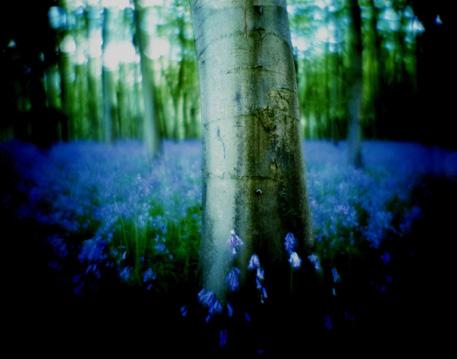
Photograph copyright ©1999 - 2018 Denis Waugh.
External Links
QUARRY WOOD AND BISHAM WOOD
At Bourne End a cup of UHTea dribbles down my white shirt, which is unlikely to recover. It is probably a sign that I should have crossed the river at Bourne End railway bridge which has a footpath attached. But instead I take the path at the foot of Winter Hill past Quarry Wood.
`very long ago, on the spot where the Wild Wood waves now, before ever it had planted itself and grown up into what it now is, there was a city - a city of people, you know. Here, where we are standing, they lived and walked, and talked, and slept, and carried on their business. Here they stabled their horses and feasted, from here they rode out to fight or drove out to trade. They were a powerful people, and rich, and great builders. They built to last, for their city would last for ever.'
`And when they went at last, those people?' said the Mole.
`When they went,' continued the badger, `the strong winds and persistent rains took the matter in hand, patiently, ceaselessly, year after year. Perhaps we badgers, too, in our small way, helped a little - who knows? It was all down, down, down, gradually - ruin and levelling and disappearance. Then it was all up, up, up, gradually, as seeds grew to saplings, and saplings to forest trees, and bramble and fern came creeping in to help...'
Quarry Wood was probably Kenneth Grahame's inspiration for the Wild Wood in The Wind in the Willows. It is like a wild wood, with hawthorn, oak, holly, hazel, hornbeam and elder all of a tangle and, struggling upwards through it now and then to catch some air, the odd tall ash.
In Bisham Woods is the old icehouse for Bisham Abbey, built in 1760 and beautifully restored. But I am getting ahead of myself. That is at the far end of the woodland. For the most part, throughout Bisham Woods is an undercarpet of ivy and dog's mercury which is apparently a sign of undisturbed ancient woodland. It depends what you mean by undisturbed. Here is the din of non-stop traffic. Every now and then a path leads off to the side and I think maybe there is a way underneath, but no. The marked paths lead you straight to the roadside and crossing the A404 is just not on. So I take an unmarked path and, where a great beech has slid from its chalk bed and toppled over the way, negotiate the root bundle and press on.
These woods have the most evocative names: The Hockett and Bisham-under-the-Hill; Fultness Wood and Inkydown Wood. And they are famous for bluebells in spring, but their more obscure plants also include members of the orchid family like the birds nest orchid and violet and green-flowered helleborines; as well as yellow bird's-nest, tutsan, thin-spiked wood sedge and yellow archangel. I am approaching the task of identification with a kind of frenzied purposefulness which must be due to the non-stop traffic. How can I loiter in woods to so little purpose when the rest of the world seems so preoccupied? Through the spaces in the traffic, even a woodpecker is practising typing. And doing rather better at its task than I am.
Shelley walked here with Peacock, at a time when he felt over-whelmed with remorse about his first wife, Harriet. He told Peacock that he intended to `take a great glass of ale every night to deaden my feelings'. Shelley had eloped with Harriet when she was just sixteen and repeated the escapade in 1815 with Mary Godwin when she was also aged sixteen; the year after Harriet had committed suicide by drowning herself in the Serpentine. Harriet believed it was the idea of Mary Wollstonecraft's daughter that attracted Shelley.
Most wretched men
Are cradled into poetry by wrong,
They learn in suffering what they teach in song.
Text copyright ©1999 - 2018 Priscilla Waugh.